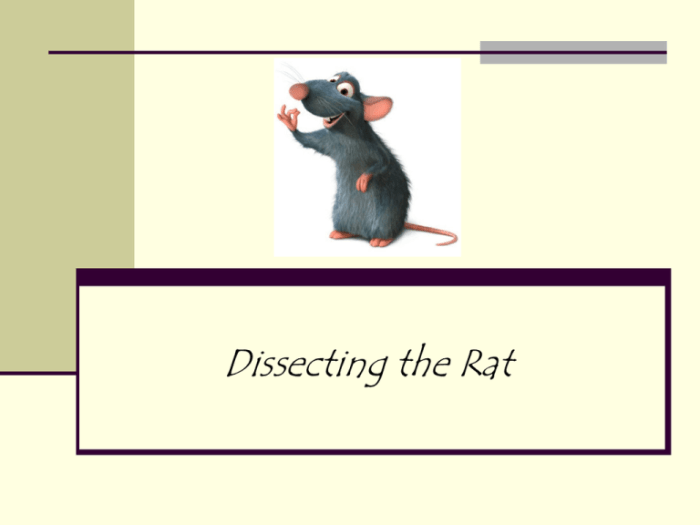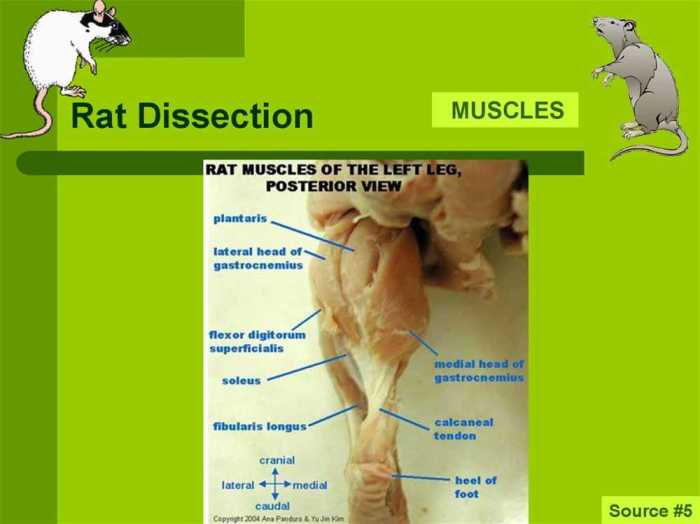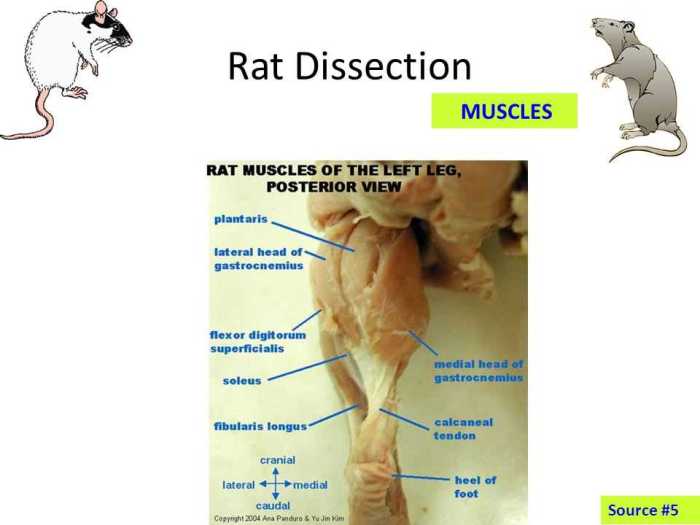Embark on a journey of scientific discovery with our comprehensive Rat Dissection Pre Lab Answer Key. This invaluable resource empowers students to delve into the intricacies of rat anatomy, ensuring a successful and enriching dissection experience. Prepare to unravel the secrets of this fascinating creature, guided by our expert insights and meticulous instructions.
As you embark on this anatomical adventure, the Rat Dissection Pre Lab Answer Key will serve as your indispensable companion, providing a clear roadmap to navigate the complexities of rat biology. Its comprehensive content equips you with a deep understanding of the rat’s major anatomical structures, dissection techniques, and essential safety protocols.
Rat Dissection Pre Lab Answer Key

A rat dissection pre lab answer key is an essential tool for students preparing for a rat dissection. It provides a step-by-step guide to the dissection process, including detailed instructions, diagrams, and safety precautions. Using an answer key during a rat dissection pre lab has several benefits, including:
- Helps students familiarize themselves with the anatomy of the rat before the dissection, making the dissection process smoother and more efficient.
- Provides a reference guide during the dissection, allowing students to quickly and easily find the information they need.
- Helps students identify and understand the major anatomical structures of the rat, which is essential for understanding the function of the rat’s body.
Materials
The following materials are necessary for a rat dissection pre lab:
- Rat specimen
- Dissecting tray
- Dissecting tools (scalpel, scissors, forceps, probe)
- Gloves
- Safety goggles
- Apron
- Disinfectant
- Paper towels
| Material | Function |
|---|---|
| Rat specimen | The subject of the dissection. |
| Dissecting tray | A shallow dish used to hold the rat specimen during dissection. |
| Dissecting tools | Specialized instruments used to cut and manipulate the rat specimen. |
| Gloves | Protect the student’s hands from contact with the rat specimen. |
| Safety goggles | Protect the student’s eyes from flying debris. |
| Apron | Protect the student’s clothing from spills. |
| Disinfectant | Used to clean the dissecting tools and work area. |
| Paper towels | Used to absorb blood and other fluids. |
Procedure
The following steps are involved in a rat dissection pre lab:
- Obtain a rat specimen and place it in the dissecting tray.
- Put on gloves, safety goggles, and an apron.
- Identify the major anatomical structures of the rat, including the head, neck, thorax, abdomen, and limbs.
- Use the dissecting tools to carefully open the body cavity.
- Examine the internal organs of the rat, including the heart, lungs, liver, and kidneys.
- Identify and understand the function of each organ.
- Dispose of the rat specimen and all materials properly.
Diagrams or illustrations can be included here to clarify the procedure.
Anatomy of the Rat, Rat dissection pre lab answer key
The major anatomical structures of the rat include:
- Head: Contains the brain, eyes, ears, nose, and mouth.
- Neck: Connects the head to the body.
- Thorax: Contains the heart and lungs.
- Abdomen: Contains the digestive organs, liver, and kidneys.
- Limbs: Used for locomotion.
| Structure | Location | Function |
|---|---|---|
| Brain | Head | Controls the body’s functions. |
| Eyes | Head | Used for vision. |
| Ears | Head | Used for hearing. |
| Nose | Head | Used for smelling. |
| Mouth | Head | Used for eating and drinking. |
| Heart | Thorax | Pumps blood throughout the body. |
| Lungs | Thorax | Exchange oxygen and carbon dioxide with the blood. |
| Liver | Abdomen | Filters the blood and produces bile. |
| Kidneys | Abdomen | Filter the blood and produce urine. |
Dissection Techniques
Proper dissection techniques are essential for a successful rat dissection. These techniques include:
- Using sharp dissecting tools.
- Making clean, precise cuts.
- Handling the rat specimen gently.
- Preserving the rat specimen in a moist environment.
Different dissection tools are used for different purposes. Scalpels are used for making cuts, scissors are used for cutting through tough tissues, forceps are used for grasping and manipulating tissues, and probes are used for exploring small spaces.
It is important to handle the rat specimen gently to avoid damaging the tissues. The specimen should be kept moist at all times to prevent it from drying out.
Safety Precautions
The following safety precautions should be followed during a rat dissection pre lab:
- Wear gloves, safety goggles, and an apron.
- Use sharp dissecting tools carefully.
- Dispose of the rat specimen and all materials properly.
- Wash your hands thoroughly after the dissection.
| Precaution | Reason |
|---|---|
| Wear gloves, safety goggles, and an apron. | To protect yourself from contact with the rat specimen and its fluids. |
| Use sharp dissecting tools carefully. | To avoid cutting yourself. |
| Dispose of the rat specimen and all materials properly. | To prevent the spread of disease. |
| Wash your hands thoroughly after the dissection. | To remove any bacteria or other contaminants from your hands. |
Question Bank: Rat Dissection Pre Lab Answer Key
What is the purpose of a rat dissection pre lab?
A rat dissection pre lab prepares students for a successful dissection experience by providing essential background information, materials list, step-by-step instructions, and safety protocols.
How can I use the Rat Dissection Pre Lab Answer Key effectively?
Review the answer key thoroughly before the dissection to familiarize yourself with the procedures and anatomical structures. Refer to it during the dissection for guidance and clarification.
What are the benefits of using an answer key during a rat dissection pre lab?
Using an answer key helps students identify and locate anatomical structures accurately, ensuring a more efficient and productive dissection.

